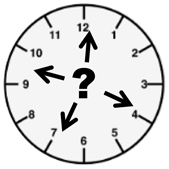|
In our last newsletter, we discussed the Arrow of Time and its connection to entropy and the second law of thermodynamics.
Recall
that the second law allows only reactions that increase entropy
(disorder) as Time increases. The Arrow of Time points in the direction
of increasing entropy, dictating that Time must always increase, and
never decrease.
We also discussed Carlo Rovelli’s claim that entropy and the Arrow of Time are emergent
properties — merely human concepts, like beauty and justice,
which help organize our thoughts but have no fundamental basis in
nature.
Since
entropy is merely a human concept without significance in nature,
Rovelli says, the infamous second law is fundamentally meaningless, as
is the Arrow of Time. Without its Arrow, Time becomes more like Space,
its arrowless partner — left, right, up, and down are intrinsically
indistinguishable in an isolated system. Since Einstein taught us that
Space and Time are intimately connected, and that motion can change
Space into Time and vice versa, eliminating the Arrow of Time simplifies
our vision of nature.

Rovelli’s next claim is that Time itself is only an illusion we find useful, but has no fundamental physical reality.
I
believe Carlo is the world’s most innovative living physicist. But, I
also believe there is a fine line between genius and insanity — has
Carlo crossed that line this Time?
Can Time really be only an illusion? Doesn’t everything change over Time? Clocks tick every second, bells chime on the hour, flowers bloom in spring, Earth orbits the Sun in 365 days. Aren’t these and all other changes in our universe driven by the inexorable March of Time?
If
Time is not fundamental, what about the variable “t” in all our
equations? How can we calculate how systems evolve without employing
Time?
Rovelli says we never really needed to invent the concept of Time.
Galileo,
the first experimental physicist, discovered that all pendulums of the
same length swing back and forth in the same amount of “time” (for
modest amplitudes). He measured “time” with the best available “clock”:
counting his own heartbeats.
For
four centuries, we employed pendulums in various forms in our attempts
to measure Time. More recently, we developed crystal oscillators, and
ultimately atomic clocks that are precise to one second in 14 billion
years.
However,
none of our clocks actually measure Time, which exists only in our
imagination. Rather, all our clocks measure observable, recurring,
physical processes, such as oscillations of strontium atoms.
Rovelli
says it makes no sense describing how real physical observables change
with respect to Time, a concept that has no physical reality. The only reality is how physical observables change relative to one another. Rather than describe two related observables A and B as A(t) and B(t), it makes more sense to describe them as A(B) or B(A).
Whatever Time truly is or isn’t, mine has run out.

Best Regards,
Robert
May, 2019
Note: Previous newsletters can be found on my website.
|